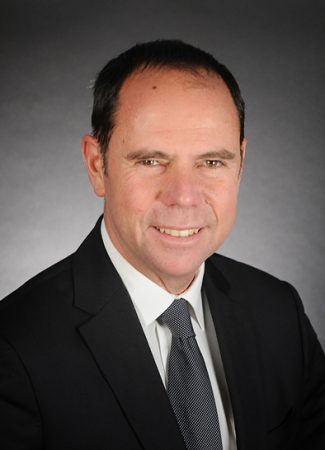In 2021, the return to a post-pandemic normality began to push up electricity bills in Europe. Already during the summer of 2021, Spain began its own battle for the EU to review the current market design, rejected by Brussels on the grounds that it would generate distortions in the markets. Spain argued that the marginalist market was not suitable either for situations of high volatility or for the massive penetration of renewable energies. Brussels argued that the market would regulate itself without the need for intervention. The invasion of Ukraine took the energy crisis to the level of a social crisis and the Commission immediately intervened the electricity market (see our article: Rising energy prices: national measures to protect European end-users). At the same time, it opened the debate on the new market structure.
On Tuesday, 17 January, the EU Energy Working Group was set up to start discussing the future reform of the electricity market. To this end, the European Council sent a document to the Member States present in this working group with the following main objectives:
- Protect consumers and industry from excessive price volatility in order to ensure affordable and competitive energy for EU consumers.
- Increase the EU’s security of energy supply and emergency preparedness.
- Improve investment incentives to accelerate the transition to clean energy to meet decarbonisation targets.
The Commission has already announced its intention to present a review of the electricity market design by the end of the first quarter of 2023. Some countries, such as Greece and Spain, have already presented their proposal. In this article, the Spanish proposal is analysed.
What are the endemic ills of the current market according to the Kingdom of Spain?
According to Spain´s “Non-paper”[1], inspired by the proposal for the reform of the European electricity markets drafted by Natalia Fabra Portela[2], Professor of Economics at the Carlos III University of Madrid, these are, briefly summarized, the main shortcomings of the current market structure and its impact on the future of energy:
- It hinders the entry of new competitors. Entry barriers hinder the arrival of new competitors, and, in any case, the pace is slow enough to consolidate excessive rents of existing competitors. Thus, with the current design, affordable and stable electricity prices will not be achieved.
- It prevents the development of long-term hedges that are illiquid at best.
- It hinders necessary investments in renewables: the fall in prices resulting from the increase in renewable production makes investment in these technologies less attractive as their deployment becomes heftier.
- It does not guarantee security of supply. The non-integration of positive externalities[3] in market prices or the existence of implicit price caps[4] prevent sufficient remuneration for firm and flexible generation capacity. Security of supply cannot be taken for granted as the recent natural gas crisis has taught us.
What does the Kingdom of Spain propose?
To adapt the current market to meet the challenges of decarbonisation and the growing volatility of the markets, Spain proposes a design based on three main pillars:
- Short-term market (daily and intraday) highly liquid and transparent, based on marginal prices. This market would be compulsory for producers and consumers (through their retail companies).
- Long-term energy market in which the regulator contracts with infra-marginal power plants (nuclear, renewables) for long-term energy, through contracts for difference (CfD), at a fixed price indexed to the daily market, and
- Long-term capacity markets for plants offering firm or flexible capacity (CCGTs, peakers, batteries, etc.), adapted to the specific needs of each regional national market.

Source: Council of Minsters presentation on the Reform of the Electricity Market[5]
Short-term market: it would continue to operate on a marginal basis establishing the natural merit order as at present, providing the necessary short-term price signals and ensuring an efficient dispatching. However, generators’ revenues would not depend on short-term price signals, as they would be governed by long-term contracts reflecting the average cost of supply.
Long-term energy market: Contracts for Difference (CfDs) will be put in place between infra-marginal generators and a regulated entity (acting as a single buyer). For the settlement of CfDs, generators submit their bids in the short-term market and, if matched, CfDs are settled against hourly pool prices. Thus, for a given hour, generators get a compensation (if the pool price is lower than the strike price) or a payment obligation (if the pool price is higher than the strike price).
The allocation of these contracts for new entrants is done through competitive auctions in which the regulator fixes the quantity to be purchased and the duration, while generators set a price appropriate to their profitability expectations.
For existing capacity, the proposal distinguishes between two cases: (i) voluntary auctions for existing renewable plants and, (ii) regulated prices for the so-called “non-contestable technologies” (nuclear and hydro).
Long-term capacity market: rewards dispatchable generation facilities with high revenue instability (i.e., marginal or storage/demand management support technologies). These will continue to participate in day-ahead markets to sell their energy without prejudice to the possibility of entering into forward contracts with retail companies or final consumers. The proposal does not specify the design, which could take the form of strategic reserves, capacity auctions, reliability options and/or decentralised obligations, depending on the peculiarities of each Member State.
Although it has nothing to do with the objective of market reform, the proposal does not forget to call for the extension of the Iberian Mechanism (see our article: Singularidad Ibérica… Parte 2 ) at least until the end of 2024 to “continue to protect consumers from high natural gas prices”.
All in all, the proposal shows some basic lines of action without going into too much detail or covering the whole regulatory scope. For example, it is not clear what role it confers to retail companies, who seem to be confined to a role of providing balancing services for their customers. What is clear is that the Spanish proposal tends to over-regulate. The central role given to the regulator (single buyer) seems to be attributing it with the roles of planner, new generation bidder or clearing house. Nuclear and hydro asset owners must be trembling at the prospect of having a regulated tariff applied to their output….
So far, the proposal has not been badly received; even historically sceptical countries such as Germany have expressed some interest (condescendence?) in it. “Spain has made a very interesting proposal […] it offers a good basis for discussion,” said German Economics Minister Robert Habeck at a conference a few weeks ago. In essence, however, we are back to a struggle between centrally planned and liberal states, where the former seek a stable tariff to support energy policies, while the latter prefer to define the policies and allow prices be set by the market. So, yes, the discussions between the two positions will be long and complicated… We will keep you posted.
Paloma Hepburn Jiménez
[1] https://table.media/europe/wp-content/uploads/sites/9/2023/01/230110_Strommarktreform_Non-Paper_ES.pdf
[2] http://nfabra.uc3m.es/wp-content/uploads/2022/12/Electricity_Reform-REV.pdf
[3] Positive externalities are those that are not internalised by electricity consumers. For example, the lack of production of an essential good and the social cost that this implies.
[4] The revenues that peaking plants earn from short-term markets only cover their variable costs; this is not the case in times of scarcity. However, the risk of being sanctioned by the competition authority in these times constitutes an implicit price cap, which prevents revenues from reaching VOLL values.
[5] https://www.miteco.gob.es/es/prensa/230110_pptreformamercadoelectricoconsejoministros_tcm30-550166.pdf







